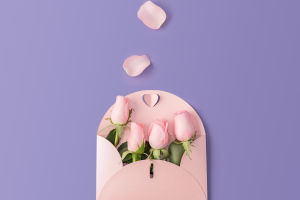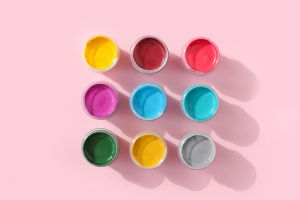A Love For Ceramics
A ceramic cup might seem like an ordinary item, but it carries a deep history, artistry, and cultural significance that spans centuries.
From ancient civilizations to contemporary artists, the ceramic cup has served as a canvas for various forms of expression.
Let’s explore the art world embodied within a ceramic cup, examining its evolution, its cultural meanings, and the skill that continues to make it a treasured art form.
1. A Brief History of Ceramic Cups
The history of ceramic cups dates back to early civilizations. Some of the oldest known ceramic vessels were crafted by the Jomon people in Japan around 14,000 BCE. Early societies across the globe—such as in Egypt and Mesopotamia—developed ceramic techniques for making functional yet beautifully decorated vessels, often used for drinking, rituals, and ceremonies.
In Europe, ceramic traditions flourished, with regions like Delft in the Netherlands becoming famous for their distinctive blue-and-white ceramics. In Germany, the town of Meissen became the birthplace of European porcelain, where artisans developed their own iconic styles that influenced the broader world of ceramics. Each culture brought unique artistic touches and advancements to ceramic cups, making them functional and artistic treasures.
2. Cultural Significance Across the World
Ceramic cups hold deep cultural meanings in many parts of the world. In Japan, the tea ceremony elevates a simple tea cup into an object of reverence and meditation. Traditional tea bowls, known as chawan, embody the Japanese philosophy of wabi-sabi, celebrating beauty in imperfection and transience. These cups often have irregular shapes and natural textures that reflect the hand of the maker, enhancing the tea-drinking experience.
In the Middle East, ceramics are a central part of cultural expression. Turkish coffee cups, often adorned with intricate floral and geometric motifs, embody tradition and hospitality. Moroccan tea cups, with their vivid colors and metallic accents, represent celebration and artistry. The decorations on these cups often symbolize local customs and artistic legacies, adding layers of meaning to each drink served.
3. Techniques and Innovations
The creation of ceramic cups involves various techniques, each contributing a different texture, color, and style. Traditional hand-throwing on a potter’s wheel allows the maker to shape each cup by hand, while coiling and slab-building methods create textured or unusual forms. Glazing—the application of a protective, often colorful coating—is another art form. Whether glossy, matte, or crackled, the glaze profoundly influences the look and feel of the ceramic cup.
Today, contemporary ceramicists are pushing the boundaries with new techniques, mixing traditional practices with modern innovation. Some use digital tools, like 3D printing, to create precise or experimental shapes. Others experiment with unique materials, blending clay with unexpected elements for texture or color variations. These modern techniques expand the possibilities of what a ceramic cup can represent, turning ordinary vessels into bold, artful statements.
4. The Role of the Ceramic Cup in Contemporary Art
In the art world, ceramic cups have experienced a resurgence, fueled by a renewed appreciation for handcrafted items and sustainable materials. Contemporary artists are drawn to ceramics not just for their functionality but for their capacity to convey personal, cultural, and social narratives. Through varying shapes, sizes, and decorations, ceramic artists explore themes of identity, tradition, and change.
For instance, renowned artist Edmund de Waal uses minimalist ceramic installations to explore themes of memory and heritage. By arranging delicate ceramic vessels with careful precision, he transforms them into works of contemplative art. Japanese artist Takuro Kuwata, known for his experimental glazes and exaggerated forms, crafts cups that blur the line between functional object and sculpture, prompting viewers to see them in a new light.
5. The Art of Collection and Display
Ceramic cups have become highly collectible, with antique and contemporary pieces sought after by art collectors. Museums and galleries around the world exhibit ceramic pieces, showcasing both ancient and modern works. Collections of ceramic cups allow viewers to appreciate the aesthetics, craftsmanship, and history behind each piece.
In these exhibitions, ceramic cups are elevated from simple household objects to treasured art forms. For example, the V&A Museum in London features a vast collection of ceramics that span various eras and regions, celebrating the diversity and beauty of ceramic artistry. By showcasing these cups as art, museums give insight into the cultural and personal meanings embedded in each piece.
6. The Personal Connection to a Ceramic Cup
For many people, a ceramic cup is a deeply personal item. Whether it’s a handcrafted mug from a local artist or a cherished heirloom, these vessels often hold memories and connections that go beyond their function. The warmth of holding a ceramic cup, feeling its unique texture, and admiring its design creates an experience that’s both sensory and sentimental.
The rise of handmade ceramics in recent years reflects a growing appreciation for craftsmanship. Each piece is unique, showcasing the hand of the artist, with subtle differences in texture, glaze, and form. These variations make each cup one of a kind, enhancing its value to those who use and collect them.
The humble ceramic cup embodies the intersection of art, culture, and history. Over the centuries, it has evolved from a basic functional item to a cherished art form, reflecting the skills, creativity, and values of its makers. Each ceramic cup, with its distinct design, tells a story and offers a glimpse into the artistic world of ceramics.
When you hold a ceramic cup, you are holding a small piece of art history, a vessel that connects you to a tradition of artistry that spans the globe. The next time you sip from a ceramic cup, take a moment to appreciate the artistry within it—a quiet celebration of human creativity and the timeless beauty of this art form.


